
This week for Flora and Fauna Friday we have the big ol’ beans of the bayou, Riverhemps (Sesbania spp).
Here in South Carolina there can be found three species of Riverhemp. The most common off island is Bigpod (Sesbania herbacea). The most common on island is Bagpod (Sesbania vesicaria). Lastly, is the invasive exotic Purple Sesbane (Sesbania punicea), which is most readily seen along the highway near Pine Landing Road. Our two native members, Bigpod and Bagpod, are both annuals and quite similar in most respects, so I’ll speak about them separately from the non-native Purple Sesbane.
Riverhemps grow quickly in saturated soils, particularly ditches. Bigpod is the more common species in South Carolina, however Bagpod is especially common around Edisto. The two species are best told apart by their seedpods. Their flowers are also indicative, although less distinctive. Bigpod has a long, narrow seedpod; it’s the length of a pencil but half the width. Bagpod has a wide, bulbous seedpod about the size and shape of a thumb with two hollow bladders inside. This difference in fruit is a difference of strategy between the two species. Bagpod fruits are hollow and float on the surface of the water. Inside each bladder is one large bean. Bagpod’s strategy is to put all its energy into one or two seeds per fruit and gift the pair with a life raft. This lets the seeds drift over winter on standing water until they settle on dry ground where the large seeds can easily establish. Bigpod’s approach is the complete opposite. Its pods are stuffed with dozens of match-head sized seeds and nothing more. When the plant dies and dries, these pods split and dump seeds haphazardly into the soil and water below. Here they may be submerged and perish or be eaten by Rats and Sparrows. Though through attrition, some are assured to fall into some cozy nook or cranny. The flowers of Bigpod are an inch wide, rich yellow, and usually seen in duos or trios. The flowers of Bagpod are significantly smaller, produced in pendulous clusters of 4 or more, and usually two-tone, yellow on top and orange below, but sometimes just a yellow-orange throughout.
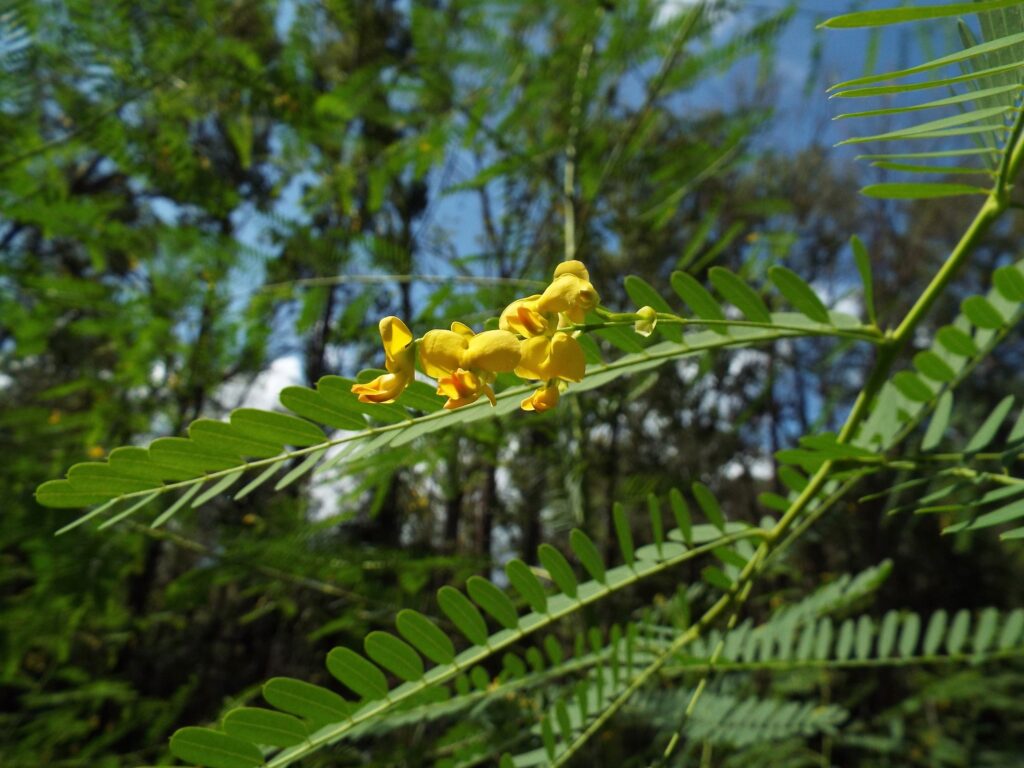
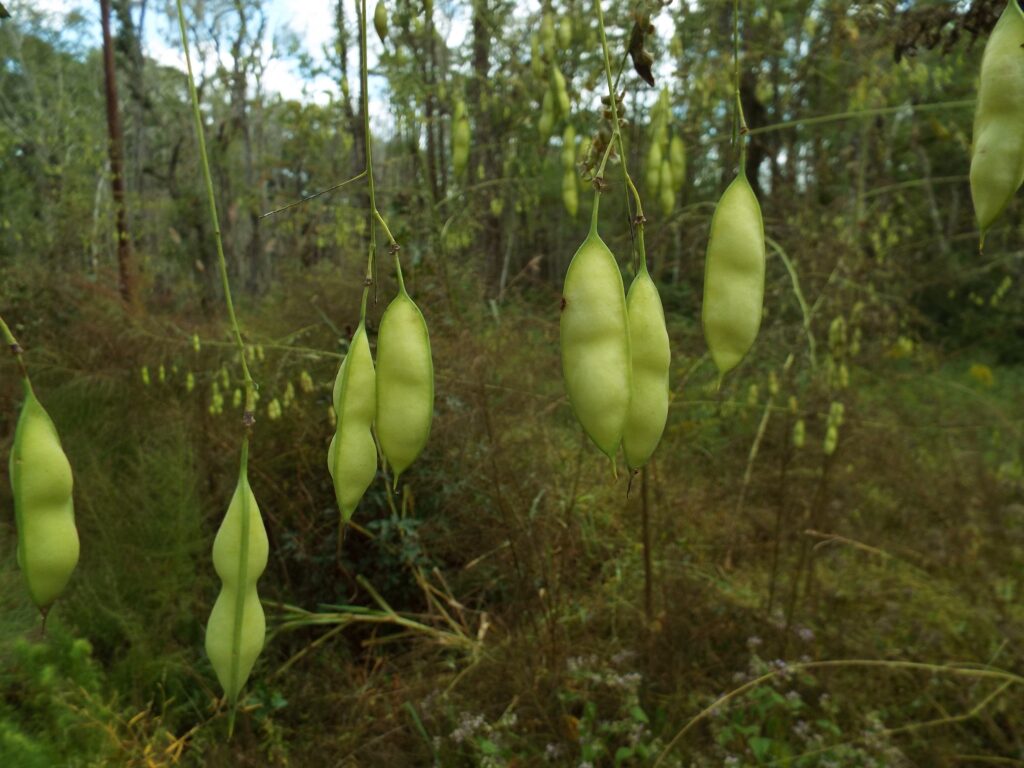
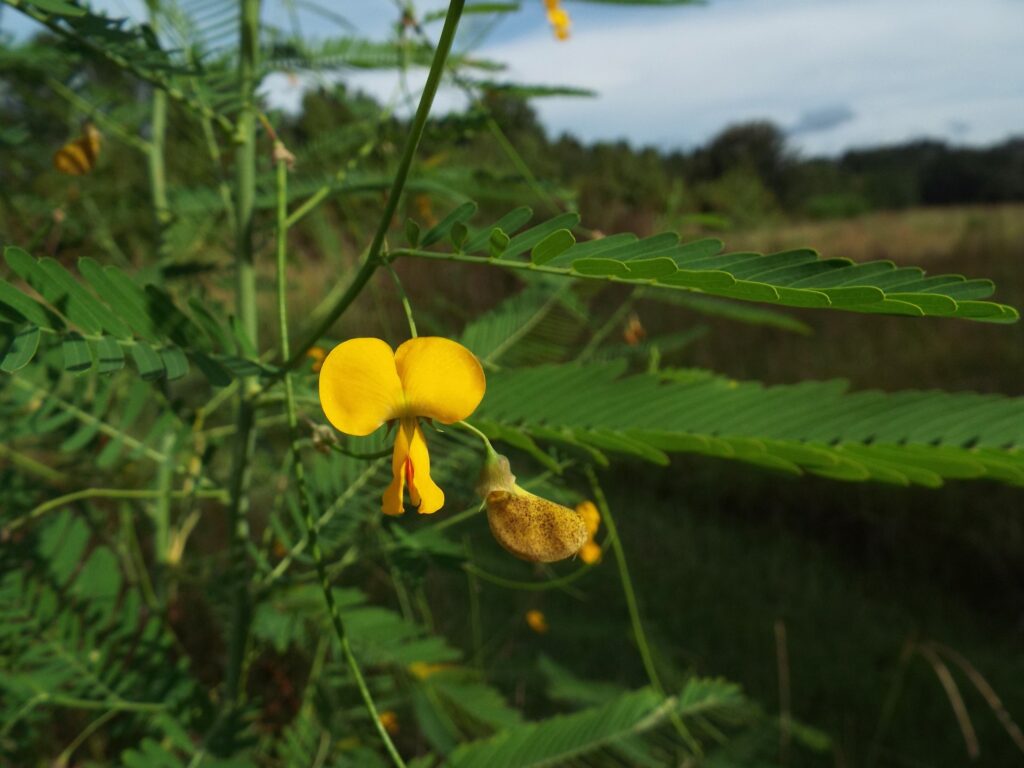
Bigpod and Bagpod are tall, stringy annuals that can exceed 12ft in height. They have narrow stems and branches and a very open appearance. Their leaves are long and divided into many small leaflets. Their thin stems are hollow yet quite stiff. This minimizes the cellulose needed to produce the same surface area of leaf canopy, which makes our Riverhemps quite strong competitors wherever they can find a foothold. By then growing together as a dense thicket, they can exclude competition for next year. Their tight knit clumping assures when their seeds fall each winter, there’s bare ground for them to take hold in each spring. Their leaves are a favored host for Zarucco Duskwing caterpillars and the large golden wooly-bear caterpillar of the Saltmarsh Moth. The seeds are nutritious and feed wetland rodents and marsh birds over winter. The hollow dead stems provide habitat for many cavity nesting pollinators, including bees.

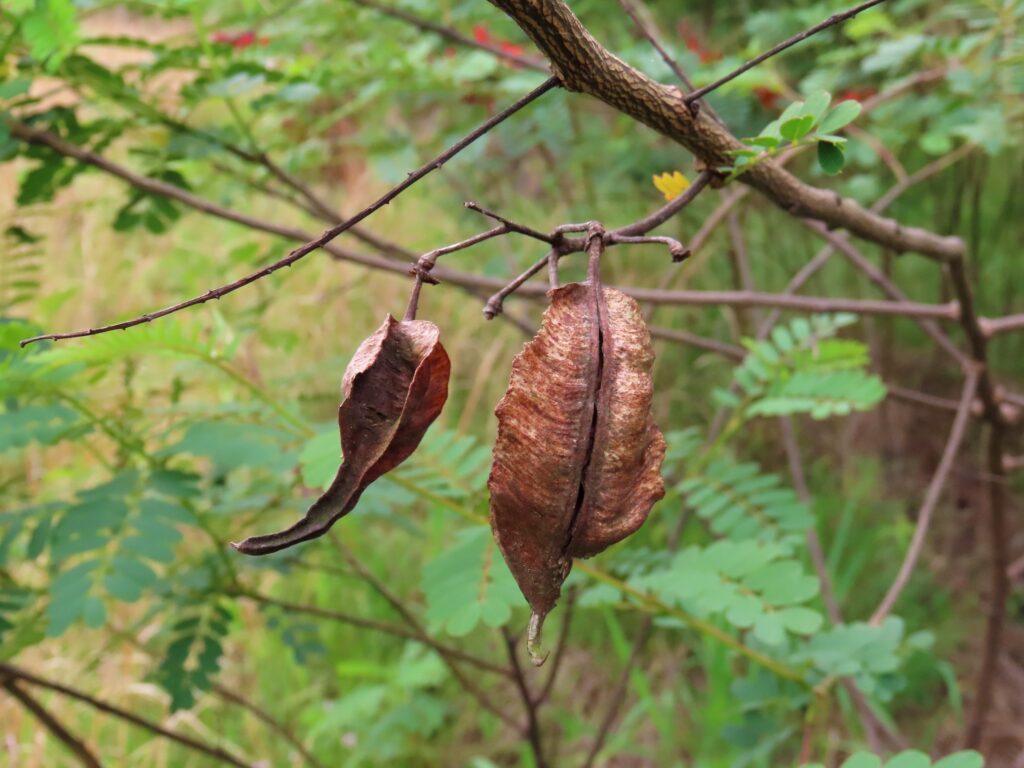
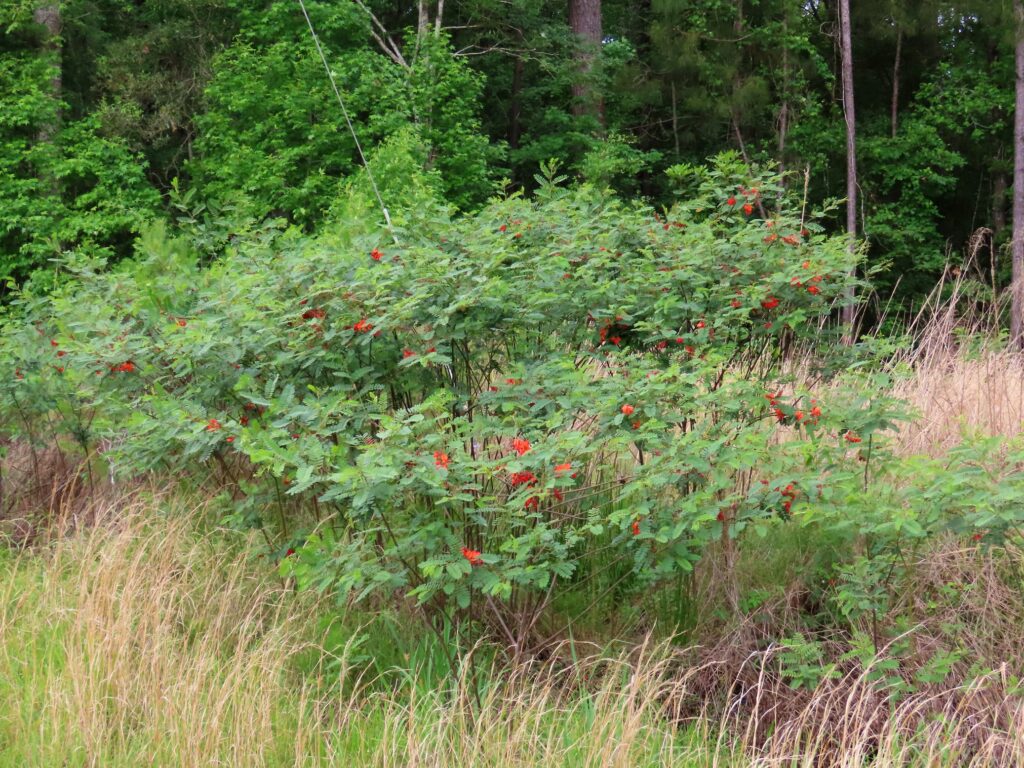
Purple Sesbane is an invasive exotic plant introduced from South America. It has wider leaves a darker green than the other two and a brown-green stem. The flowers are purple-red to orange, large, and in clusters of a half dozen or more. Purple Sesbane shares many of the same characteristics as our native Riverhemps but has a few other tricks that make it a net negative for the wetlands it weasels into. What is different about Purple Sesbane that makes it harmful to the ecosystem is that it is both poisonous and a perennial. This means that many of the wildlife benefits out native Riverhemps provide are not supplied by Purple Sesbane. Purple Sesbane is a perennial, so the dense 10ft tall thickets it forms don’t die back each year. The stems persist and leaf out each spring. This leaves no room for other plants to work their way into the thicket and break up the clump. It also provides no habitat to native bees. Both the leaves and seeds are toxic, so neither birds nor butterflies can use it for food. Since nothing eats the seeds, the thicket will spread uncontested outward until it fills the wetland.